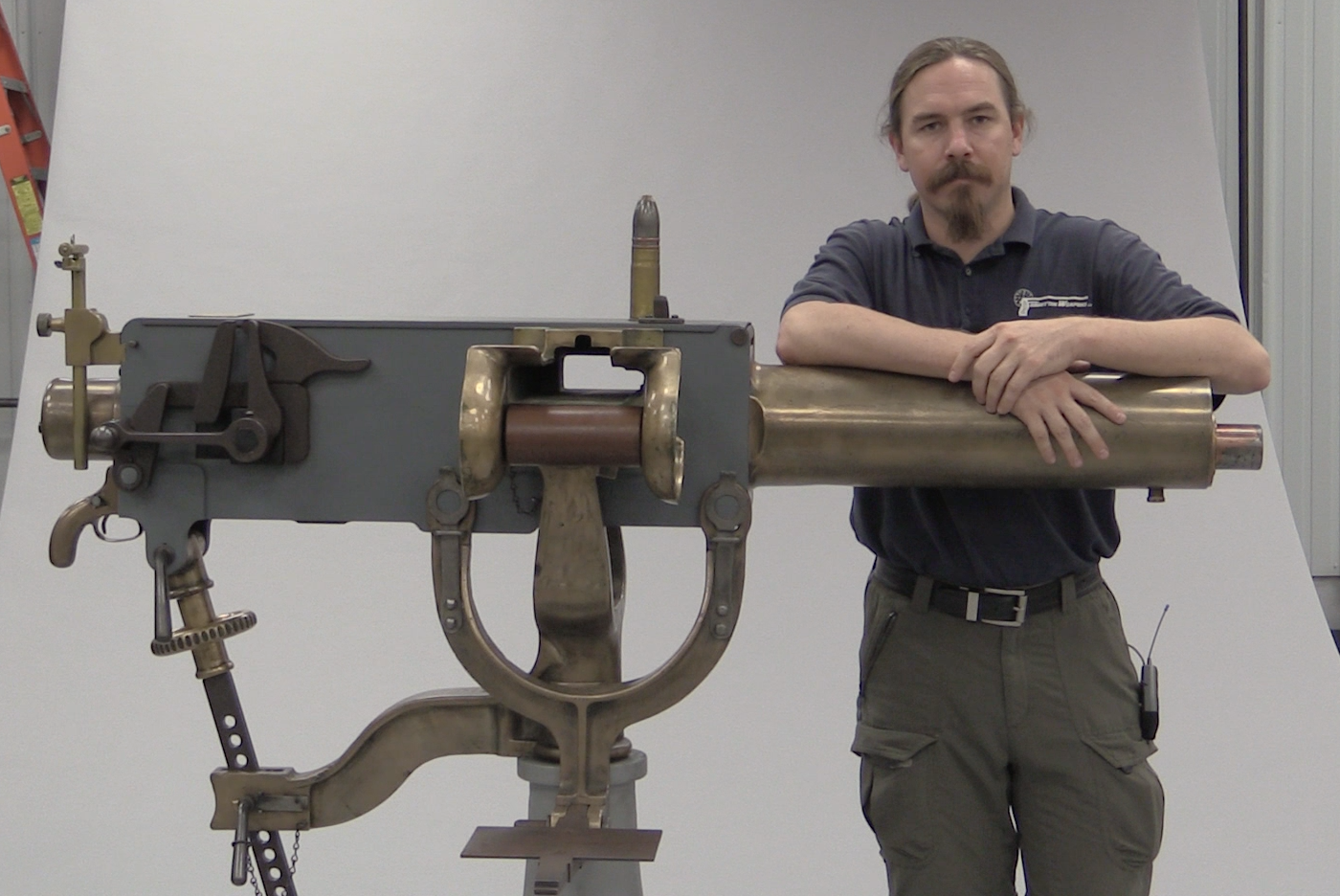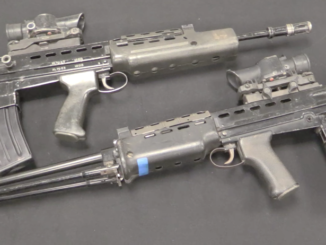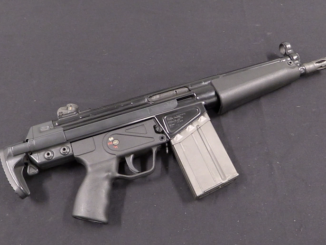When the Lee magazine rifle was adopted for British military service, it was initially produced as a long rifle for the infantry. To accommodate the cavalry on horseback, a much more compact carbine version was produced. These were initially Lee Metford pattern, but changed to Lee Enfield pattern rifling when the long rifles made the same shift. The carbines were the origin of the cocking-piece-mounted safety, as the Lee Metford rifles in service at the time had no manual safety at all. The cavalry service wanted one, and the safety they came up with was added to later patterns of infantry rifle.
The Lee carbines are designed to be sleek and handy, to easily fit into a cavalry scabbard. The bolt handles are swooped forward slightly and flattened against the receiver. The front sight wings are rounded and the magazine was reduced to 6 rounds, barely extending beyond the receiver. Early examples were fitted with a D-ring on the left side of the receiver socket for use with a single point sling, but this was removed quickly and it is very rare to find carbines with intact sling rings today.




Missing the CLosed Captions. 🙁
Interesting. Now I see the basis for my RIC carbine’s early form. Thanks.
Sleek and handy is the right description in two words! I once handled one of these carbines (in Lee Enfield pattern rifling, if my memory serves me well) and thought the same. I remember it was in pristine condition.
I used to have an 1895 Metford Cavalry Carbine, I didn’t know that I could have brought it to the USA with me and sold it.
One has to wonder why the cavalry asked for a safety catch. Did their previous weapons have a nasty habit of going off in the scabbard during rough rides?
You don’t have much experience with horses, do you?
Unfortunately, no, but I suspect that riding a horse in the middle of some wild, wild, wilderness (and under fire) is NOT smooth by anyone’s standards. So let’s not attempt to draw a carbine out of the scabbard at full gallop.
SOP for cavalry pretty much everywhere in those days was to carry the carbine with an empty chamber. Even ones that could theoretically be carried uncocked over a loaded chamber could be bounced hard enough to discharge by the horse’s movements, especially in fast movement (canter or maneuvering gallop).
Keep in mind that the saddle scabbard was normally vertical on military saddle tack, versus angled back under the rider’s leg as adopted by civilians due to hard practical experience. The Book said that the scabbard was to be vertical, so vertical it would be.
with a striker-fired weapon, this put it in the perfect configuration for a hard “landing” such as going over a hurdle to subject the striker to enough Gs to overcome its inertia and force it into the primer of a chambered round.
One reason for the half-cock on such arms as the Spencer, Henry, and Winchester was to allow saddle scabbard carry with a loaded chamber with less risk of inertial AD. Hammer all the way down on a loaded chamber in those was not and is not a safe carry mode.
The cavalry insisting on an actual manual safety was very forward-thinking at the time, as manual safeties had been a rarity on firearms of any type once repeaters became common. They were in fact fairly common on muzzleloading arms, usually a slider on the rear of the lockplate that locked the hammer at half-cock.
(Not to be confused with a “dog-lock” which is something else entirely, an external pivoted hook that can be released simply by bringing the hammer to full cock- meaning, it could be and often was overridden accidentally.)
Note that the manual safety was adopted for the infantry on the Long Lee-Enfield MK1, removed on the MK1*, and put back on the MK2, where it remained forever after on everything up to and including the Rifle No.4 variants. I’m guessing that there were a fair number of accidents with MK1*’s.
Then of course there were the French rifles, right up to the MAS36, which had no manual safeties at all unless you count the magazine cutoff, which I don’t. But that’s another story for another time.
cheers
eon
About sixty five years ago, I remember, on a dull cold winter’s evening, firing one of these carbines on Holcombe Moor Rifle range in Lancashire. The muzzle flash was spectacular!
I’ll leave it here.
https://www.gunboards.com/attachments/eb8105f1-1f2d-413d-8cb1-a61d78fc6f30_1542491085265-jpg.3305923/?__cf_chl_jschl_tk__=e07afe5db8bfe32e4096b9f738362975f72901d1-1601554887-0-AWyye_P94_fYEoueTeH0fxLL8nBZHzcvEM7jTGYk2rPcsb_9oQ7aCNTgjBP5gLKMmsLg8feqK_aKQl3KTg3qIBdoufih7eMmopDm11oaomE8ITTc3YgRmHqtAzmG9C3YUV0d8rcKgTxJ4bD65di5HeBZtq79gpSOdueUNNzhttkT0zR884N4rZgni5Bh1Fx2i2sp2xsIYoOLt5NWEpmEvu64GRAct6XemvVBKdZS7qAp_Gx0uAMZtOi7pVIG4OjZDM8E_ScZ9-HYDfJzN9mSZaRwE1KeQ0nbBZgFo8qTuk6Setu8sCZLdl5D9MQGYd8M_-IvgUcDQkxuk8C6R8z5WoNGIfUZi2XVkqRqKiGvZmlwqKIyNvzV-xnh1Sa8adHZq_9W4SWx_-YCDdaK5qKg4s1j479boUJQ-D2afK2vLFK8PrbmZnGMLGe7_clqcSxe-w
https://www.gunboards.com/attachments/726eda82-392f-496d-80dd-2df751b41c35_1542492250073-jpg.3305949/
We should definitely adopt those again, along with 1908 pattern Cavalry Trooper’s Swords… And horses.
Poor horses have suffered enough.
I have inherited a carbine which matches exactly the video on the Lee carbines. dated 1895, VR crest, sling bar in the stock. It is in a bit better visual condition than the one in the video. Unfortunately, the front sight has been modified. May years go we used it to shoot rabbits with the old cordite ammo. Very unstable stuff.
Is there any collector interest in this item?